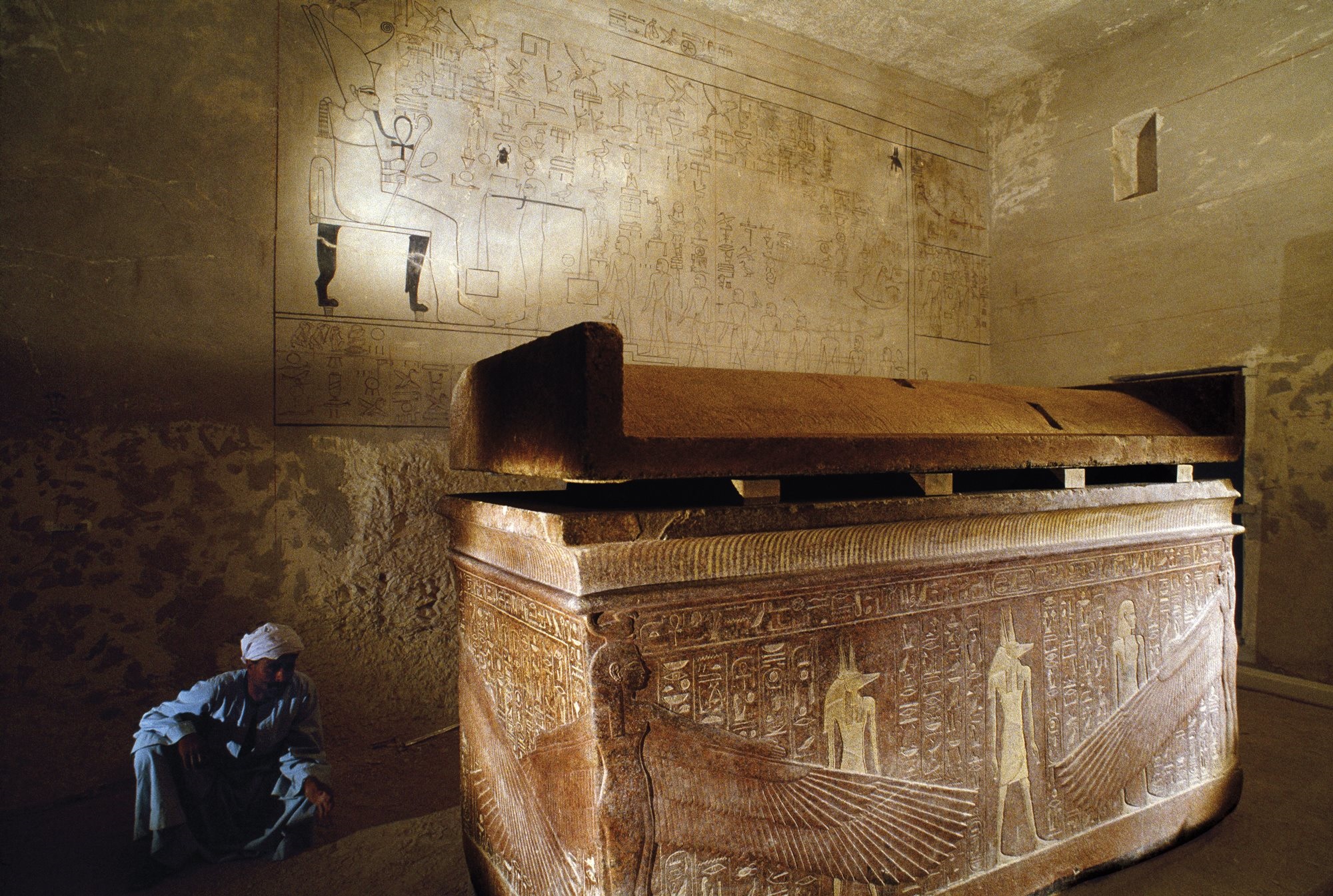During his short reign, the 'boy king', Tutankhamun was largely guided by the two largest men in his life: his Vizier (prime minister), Ay, and his closest advisor and Commander-in-Chief of the Army, Horemheb .
Tutankhamun unexpectedly died young, without a son and heir. Whilst Horemheb carried the proud titles of 'Deputy of the King' and 'Hereditary Prince', suggesting he was next in line to the throne, it was Ay who buried the young king and became pharaoh.
Ay's next move would have been a major blow to any ambitions Horemheb had of being king. He chose another successor: a 'General' and 'Royal Fan Bearer' named Nakhmin. Ay appointed him 'Hereditary Prince' and 'King's Son' - essentially making Nakhmin the Crown Prince, outranking Horemheb.
On Ay's death however, it was Horemheb who claimed the throne. Whether Nakhtmin had died naturally, or was forced out of office by Horemheb isn't clear. However from the way Ay's and Nakhtmin's tombs were desecrated after their deaths, it seems that someone was intent on discrediting them as successors to the throne.
Finally it was Horemheb's turn and he abandoned the tomb he had been preparing at Saqqara and instead commissioned a new resting place in the Valley of the Kings. It was never finished.
It appears that Horemheb's tomb (KV57) was abandoned suddenly, as if the workmen finished on one day, planning to return the next. The lower levels of the tomb were not even cleared of building debris before Horemheb was placed in his granite sarcophagus.
Horemheb enjoyed a long reign of close to 30 years, so why there wasn't time to finish his tomb is a mystery. The incomplete state does however provide us with the opportunity to follow the stages of decoration, from the initial sketches to the its final, brilliantly-painted form.
Pictured is Horemheb's burial chamber. The red granite sarcophagus is beautifully carved with four goddess at the corners, their wings stretched out in protection. The side closest to us shows Serket, the scorpion goddess, whose job is to protect Qebehsenuef, the god guarding the embalmed intestines.
Between the wing tips, on the long sides of the sarcophagus is Anubis, god of embalming and protector of the dead.
The eastern half of the north wall shown depicts the judgement of the dead by Osiris, seen sitting on a chair. In front of him is a balance mounted on a mummy.
You can read more about Horemheb's commitment to set things right after Akhenaten's infatuation with Aten in the latest Nile Magazine. Visit the 'NILE Store' page to download yours today.
Photo: Kenneth Garrett
